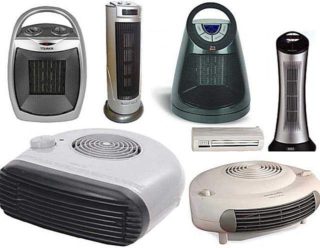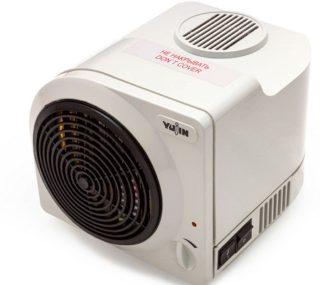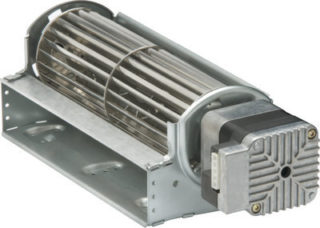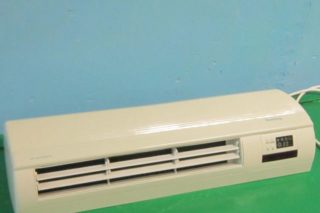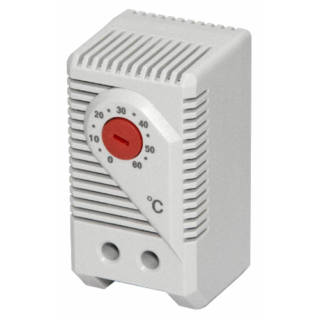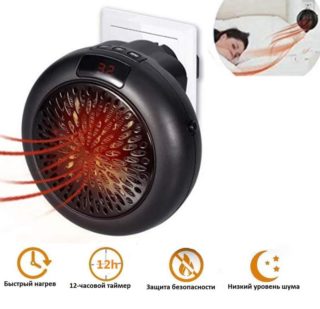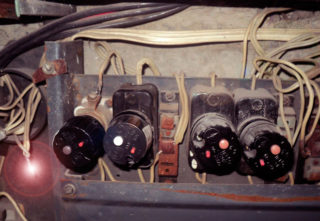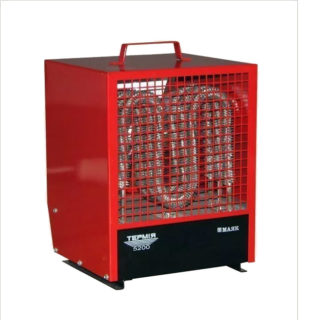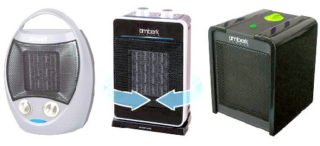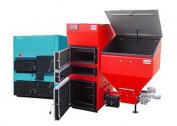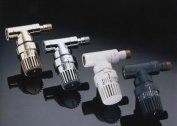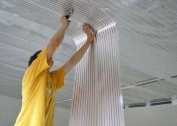A heating unit blowing air through a heating link with an integrated fan is called a heat fan. The device is used in rooms where constant heating is not necessary, but a rapid increase in temperature is required. The unit operates in fan mode if the heating element is switched off.
Construction principle
Compact appliances are installed anywhere in the room and are powered by electricity. The device generates heat, which is distributed through the room using a fan.
The fan with heating for the house consists of the following parts:
- heater;
- paddle fan;
- case box;
- Electrical engine;
- air inlet and outlet grille;
- thermostat;
- mode switching knob and temperature adjustment;
- overheat protection sensor.
During operation, safety rules must be observed. Do not put objects on the unit and dry things, place flammable substances.
The case is made of plastic or metal, depending on the price category. For an apartment, a box of the second type is better.
Types of Heat Fans
An electric heater with a fan is available in different types, differing in technical parameters and internal filling. Reliability and uninterrupted operation depends on the type of heating link and fan design. Practicality and durability are determined by the embodiment and the control method.
By type of heating element
The heating group in the device determines the power and affects the rate of temperature increase. Some elements are operated in open form, others are insulated with protective materials.
Models of fan heaters for the home:
- With a spiral element. Low-cost units heat the air, which is pumped through a metal spiral with high electrical resistance. Nichrome wire is placed openly and wound on an elongated part made of refractory material.
- With TEN. The tubular electric heater is coated with insulation. Filler is poured inside, manganese oxide or quartz in the form of sand is used. The inner filling helps to evenly distribute heat throughout the outer shell.
- With ceramic air heater. Externally, the component link resembles a structure in the form of separate cells. The composition consists of semiconductors protected by a ceramic shell and an aluminum lattice with good heat conductivity.
The spiral burns oxygen in the room, and in a dusty atmosphere emits an unpleasant odor. Ceramics have a greater effect and belong to safe options in terms of fire.
By fans
The axial type of fan is a common type, while the blades are fixed to the rotor of the engine. The wings are made of plastic or metal, rotate around a central axis, their number can be different. This type is used in desktop and floor models of the heat fan for the home.
The tangential or diametrical view contains a drum wheel with bent blades in the structure. The impellers are arranged on the axis in parallel order. The housing has two openings: a branch pipe (inlet), a diffuser (outlet).In such devices, the flow passes perpendicular to the rotational axis, the air is distributed evenly. Diametric fan heater is better than axial, because it works silently.
In a diagonal design, the air first moves along the axis, then with the help of specially designed wings, the direction changes by 45 °, which accelerates the heating of the room. Such a heater is used in some versions of desktop models.
The bladeless design was developed by English manufacturers and does not include moving parts. The fan operates on the principle of a jet turbine. Air enters the fan ring, which has aerodynamic characteristics and exits the gap along the outer perimeter.
The bladeless model provides comfort and safety, works silently.
By execution
The installation method divides the units into mobile and stationary categories. The first devices are transferred to any part of the room and can be hung on hooks. This category includes a desktop heater with a fan. The mobile device weighs a little, has a power in the range of 2 - 2.5 kW.
Stationary devices are divided into types:
- wall mounted;
- ceiling;
- floor;
- combined.
A floor heater with a fan looks like a vertical column, sometimes the case is movable to transfer heat in different directions.
Wall-mounted models resemble an air-conditioned indoor unit; appliances supply air down. Such fans with a heating element are used to obtain a thermal zone above the entrance from the street. Ceiling fan heaters supply air in different directions, usually placed in rooms with high ceilings.
According to the control system
Management is mechanical, automatic or electronic. Automation sets an acceptable degree of space heating, starts and turns off without human intervention. You can select power saving mode.
Mechanical regulation is more commonly used in a home heater. There are handles on the case:
- Temperature regulator;
- power level coordinator.
With electronic control, the work is coordinated on a touch or push-button housing panel. Models are equipped with a timer for economical operation and protective sensors against freezing and overheating. The units are controlled by a remote control that controls functions from a distance.
Specifications
The parameters of fan heaters vary depending on the model and power, therefore, they differ in different versions.
General technical indicators:
- appliances produce heat at the same time as they are turned on; no time is required for heating the element;
- shutdown at achievement of a certain temperature or after passage of the set time;
- optimal ratio of power and temperature;
- overheat protection sensors;
- power from 0.8 to 12 kW;
- the ability to operate in fan mode;
- built-in rollover sensor.
Certified materials are used in the production. There are service centers that carry out repairs.
Advantages and disadvantages
Fan heaters work constantly according to the set program. The heat is distributed evenly in the room, thanks to the forced air. Desktop appliances are moved to the desired location and heat a specific area. Wall-mounted units create targeted thermal curtains in places with the greatest penetration of cold air.
The disadvantages are that the fans (except for ceramic appliances) dry the air, therefore, manual humidification or installation of an appropriate system is required. Non-electric units, such as heat guns or diesel stoves, pose a risk of poisoning by fuel vapor.
Rules for choosing heat fans
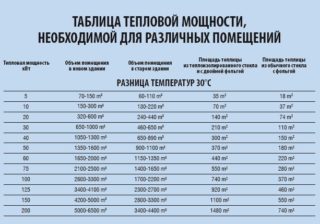 The purchase of a heating device depends on the temperature requirements, the regularity of being in the room. It is best to choose a fan heater, taking into account the technical characteristics and cost of the device.
The purchase of a heating device depends on the temperature requirements, the regularity of being in the room. It is best to choose a fan heater, taking into account the technical characteristics and cost of the device.
When determining the type of unit, pay attention to the indicators:
- power consumption;
- type of thermocouple;
- number of additional functions;
- functionality mode.
Low power home devices are selected. Industrial units are designed for heating large rooms. The technical data sheet indicates the characteristics by which the optimal model is selected without overpaying for unnecessary functions.
Power
Home fan heaters are characterized by a power of 0.8 - 3.0 kW and are used for rooms with an area of 10 - 20 m2. If the appliance complements the main water heating, it is enough to select the indicator 1 - 1.5 kW.
Low-power devices (0.8 - 1.2 kW) are used in such cases:
- in the building, the old wiring with aluminum wires and the overload of the electrical system threatens with a fire;
- the house has several rooms and appliances must be included in each;
- small room size.
Conventional household outlets have a current limit of 16 A, which corresponds to a power of 3.0 kW, so the use of powerful fan heaters is not recommended for a long time.
A heating element
Nichrome wire has been used in devices for a long time and represents a cheap type of heater, reaches + 800 ° С. The spiral often burns out, is a fire hazard element, therefore the device requires a superheat monitoring sensor.
The heater burns out less often, because it heats up to + 450 ° C, dust in the air does not burn, so there is no unpleasant smell. The price of thermal fans with heating elements is higher than spiral ones, but they are safer. In ceramic units, the heater is made of semiconductors coated with a protective layer. The temperature is in the range +100 - + 150 ° С, and the impeller is located behind the element, which gives uniform cooling.
Operating modes
Each model has several modes of functionality. Some are set during off-season work to create comfort, others are ideal on frosty days.
Variety of modes:
- ½ power indicator is indicated on the panel by one dot or 1;
- work in full force is selected by translating the toggle switch to 2 points or the number 2;
- ventilation is carried out when the handle is in the initial position.
The third position is selected in the summer when airing the room. Switching the toggle switch means changing the speed of the impeller revolutions, coordinating the heating, and automatically maintaining the selected parameters.
Additional functions
Protection against overheating is implemented by the thermostat and turns on when the maximum values are reached, the fan heater stops working for a certain time and cools. There is a relay that turns off the device when dropped or thrown over.
The power of the air flow is controlled by the choice of fan speed. The mode is selected if the area adjacent to the heater is heated without heat spreading throughout the room.
Additional features include:
- device rotation mechanism;
- silent operation bearings;
- thermostat;
- case with protection against moisture drops;
- moisturizing device;
- air filter;
- remote command set.
The ionization function is in additional working conditions, but for efficiency it is better to purchase a separate device.
Application area
Fan heaters are used in different rooms, for example, apartments, private houses, garages. Devices heat greenhouses and utility rooms.
Thermal appliances are divided into domestic and industrial.
Household appliances are notable for their low power. Industrial fan heaters can work around the clock without compromising internal mechanisms. Such units are connected to a separate wiring and equipped with circuit breakers that transmit currents with high rates.
Popular models of heat fans
Compact Galore appliances are ergonomically designed and overheated. The range has desktop and floor models that quickly heat the room.
Ballu - portable units work efficiently, are simple to operate. There is a regulator of the heating temperature of the element and the speed of rotation of the impeller.
Electrolux devices have an innovative design, are characterized by the use of environmentally friendly materials in production. Switching toggle switches and additional functions allow you to solve many problems.
The Timberk line contains ceramic and spiral models of various placement. Some options are equipped with a rotary housing, an air humidification system, and protective sensors.
The Polaris range is presented by installations convenient in work. Lightweight and ergonomic fan heaters have good performance, different heaters of various types.
